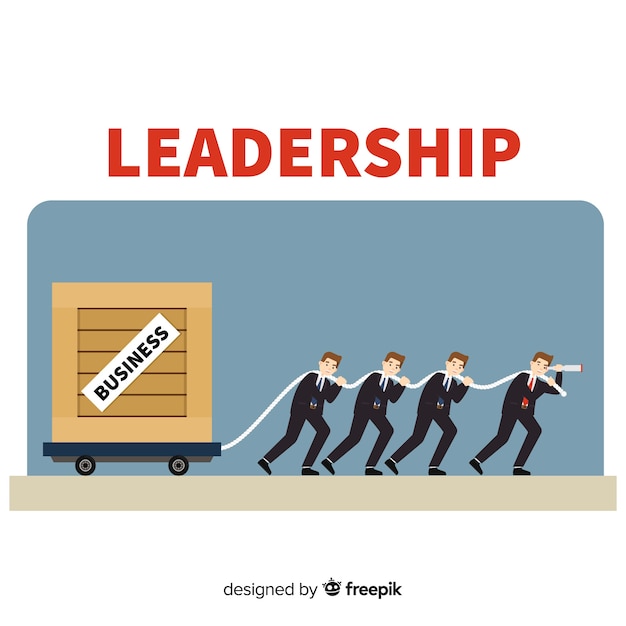Measuring Team Building Impact: Metrics and Indicators of Effective Leadership

Photo by freepik @ freepik
Ever pondered how the invisible threads of team dynamics and leadership effectiveness intertwine to forge a successful organisation? You're not alone. It's essential to use certain metrics and indicators to measure team building impact and the efficiency of leadership. Think about communication patterns, conflict resolution abilities, shared objectives, and communication flow observations - these all provide insight into team cohesion and productivity. But what part does leadership play in this? And how can we use this data to improve? Let's explore further.
Understanding Team Building
In order to fully grasp the impact of team building, you must first understand its core principles and strategies. Team building is the process of turning a group of individual contributors into a cohesive unit—a team. This transformation can't happen overnight and it's not a simple switch to flip. It's a process, a deliberate and strategic approach to building a well-oiled machine.
It's about defining shared goals and creating an environment where everyone feels valued and heard. It's about fostering trust, which is perhaps the most vital component of a successful team. Trust allows for open communication, effective problem-solving, and a healthy exchange of ideas. It's also about promoting collaboration rather than competition within the team.

Read more: The 3Cs of Team Growth
In addition, you should consider the role of diversity in a team. Diverse teams bring different perspectives, ideas, and approaches to the table which can lead to innovative solutions. But diversity isn't just about ethnicity or gender; it's also about a diversity of skills, experience, and knowledge.
The Importance of Effective Leadership
Undoubtedly, effective leadership often serves as the cornerstone of successful team building. You can't overlook its role when it comes to creating a cohesive, goal-oriented team. It's the power that drives the wheel of teamwork, influencing the overall direction, function, and performance of the group.
Analytically speaking, effective leadership nurtures an environment that encourages open communication, fosters trust, and promotes mutual respect. It's instrumental in establishing the team's collective vision, aligning individual goals with it, and ensuring everyone's on board to accomplish it.
Strategically, it's the leader's responsibility to cultivate a culture of accountability within the team. They're in charge of setting clear expectations, providing feedback, and acknowledging the contributions of each team member. This not only motivates the team but also boosts their morale and productivity.
In a detailed view, it's also the leader's role to manage conflict constructively, making sure that disagreements don't derail the team's progress. They need to be adept at handling these situations, turning potential discord into opportunities for growth.
The importance of effective leadership, hence, can't be understated. It's the fulcrum on which team building balances, pivotal in steering the team towards achieving their objectives.
Key Indicators of Team Effectiveness
Exploring the intricate dynamics of teamwork, you'll find several key indicators that reflect the effectiveness of a team, critical in measuring the impact of team building efforts. They provide unparalleled insights into the functioning and productivity of a team.

Firstly, you'll notice clear communication. It's the backbone of any successful team. If team members understand their roles, expectations, and goals, it's a positive sign. Simultaneously, the ability to voice out concerns and suggestions without fear of retribution indicates a healthy environment.
Secondly, look for shared responsibility. It's a clear manifestation of trust and mutual respect among team members. When everyone shoulders responsibility, it not only enhances accountability but also fosters a sense of ownership.
Thirdly, you should observe conflict resolution capabilities. Disagreements are inevitable in any team. However, the way these conflicts are handled can make or break a team. Effective teams have mechanisms in place to resolve disputes amicably.
Lastly, keep an eye on the results. High-performing teams consistently meet or exceed their goals. If a team consistently achieves its objectives, it's a sure sign of effectiveness. Remember, it's the collective efforts that drive a team towards success.
Metrics for Measuring Team Cohesion
Building on these indicators of team effectiveness, let's consider specific metrics that can help measure the level of cohesion within a team. As a leader, you should be detail-oriented and strategic in your approach to tracking these metrics.
- Communication Patterns: You can gauge team cohesion by observing the communication flows amongst team members. High levels of open and constructive communication often indicate cohesive teams.
- Conflict Resolution: How your team handles disagreements can speak volumes about its cohesion. Teams that effectively resolve conflicts, maintaining respect and positive relationships, score high on cohesion.
- Shared Goals and Objectives: A cohesive team is likely to align on their goals and objectives. They're not just working together, but they're moving in the same direction.
The Role of Leadership in Team Productivity
As a leader, your role can greatly shape the productivity of your team, setting the tone for collaboration, decision-making, and problem-solving. Your strategic planning and vision directly influence your team's ability to meet targets, deadlines, and expectations. Hence, it's vital to understand how your leadership style impacts the group's productivity.
You're not only responsible for creating a conducive environment but also for fostering a culture of accountability and continuous improvement. It's not just about assigning tasks and deadlines. You need to be actively involved in the process, providing guidance, feedback, and support where necessary. This active involvement can boost morale, promote trust, and lead to higher productivity levels.
Additionally, the way you handle conflicts within your team can either foster or hinder productivity. A leader who effectively manages conflicts can transform them into opportunities for growth and innovation. On the other hand, if conflicts are poorly managed, they can lead to decreased morale and productivity.
This may interest you: Empowerment in Leadership: Strategies for Cultivating High-Performing Teams
Lastly, your ability to inspire and motivate your team significantly influences productivity. By recognising their efforts, challenging them, and providing opportunities for growth, you can spur your team on to greater heights. Therefore, effective leadership is directly proportional to team productivity.
Evaluating Communication Within a Team
Mastering the art of effective communication within a team is vital for success, as it directly influences the team's ability to collaborate, innovate, and resolve conflicts efficiently.
Evaluate the communication within your team methodically. Pay attention to both verbal and non-verbal cues. These can provide insights into understanding, engagement, and the overall health of team dynamics.
To evaluate communication, consider these indicators:
- Frequency of communication: Regular, consistent interaction among team members suggests a comfortable communication environment. It's a sign that people feel free to express ideas and share information.
- Quality of communication: Are messages clear, concise, and well-received? Misunderstandings or frequent need for clarifications can indicate issues.
- Feedback mechanisms: Effective teams foster a culture of constructive feedback. Assess how team members give and receive feedback.
Remember, it's not about quantity but the quality of communication. Always encourage open, clear, and respectful communication. It's a pivotal aspect of a high-performing team, driving collaboration and innovation. Analyze these communication metrics to devise strategic improvements, enhancing the overall effectiveness of your team.
Your next step? Turning your focus on 'Assessing the Impact of Trust in Teams'. But that's a topic for another day.
Assessing the Impact of Trust in Teams
In the intricacies of team dynamics, you'll find that trust plays a significant role, often serving as the glue that holds a team together; hence, gauging its impact is an essential step in bolstering your team's overall performance.
You might be wondering how to assess trust's impact accurately. Begin by observing the level of open communication within the team. If team members freely share ideas, concerns, and mistakes without fear of retribution, that's a clear sign of trust. Also, look for the willingness to depend on each other to get tasks done. It indicates a high level of trust.

Team Building by The Team Space can greatly contribute to fostering this trust through strategic initiatives and activities that promote collaboration, open communication, and mutual dependence among team members.
The next metric to ponder is the speed of decision-making. Teams with high trust levels tend to make decisions quicker because they believe in each other's capabilities. Conversely, lack of trust can lead to repeated checks and delays, reducing efficiency.
The Significance of Shared Goals
Understanding the significance of shared goals can transform your team's dynamics, fostering unity and driving productivity. Shared goals serve as a powerful tool that aligns team members' efforts, bolsters motivation, and fuels performance.
Consider these three key benefits of shared goals:
- Alignment of Efforts: Shared goals guarantee everyone is working towards a common objective, eliminating wasted time and resources on divergent tasks.
- Boosted Motivation: When everyone is invested in the same outcome, it creates a sense of camaraderie and shared responsibility, which can greatly enhance motivation.
- Enhanced Performance: With clear, shared goals, team members understand how their tasks contribute to the big picture, which can lead to improved performance and increased productivity.
Strategically, when you establish shared goals, you're not just setting targets. You're building a roadmap that guides your team towards success. It's about creating a collective vision that everyone can aspire to and work towards.
How to Measure Conflict Resolution Skills
To effectively manage your team, it's essential to assess their conflict resolution skills, as these can greatly influence communication, collaboration, and overall productivity. Conflict resolution skills aren't always easy to measure, but there are strategic approaches you can use to evaluate them effectively.
Begin by observing how your team members communicate during disputes. Do they listen actively to others' viewpoints? Or do they dominate the conversation? You're looking for a balance of assertiveness and empathy here. Remember, a healthy team doesn't avoid conflict; they manage it constructively.

Second, assess how they approach problem-solving. Do they jump to conclusions or take time to gather information and analyse the situation? Effective problem solvers are analytical, patient, and detail-oriented.
Supplementary reading: The Role of Conflict Resolution Training in Building Stronger Teams
Lastly, measure their ability to compromise. This doesn't mean giving in to every demand, but finding a solution that's agreeable to all parties involved. This requires flexibility, open-mindedness, and respect for others' perspectives.
Analysing Team Member Satisfaction
After gauging your team's ability to handle conflicts, it's equally valuable to examine the level of satisfaction among your team members. Team member satisfaction is a critical indicator of your leadership effectiveness. It's not merely about ensuring a positive work environment, but also about meeting individual needs and fostering personal growth.
Here are a few ways to analyse team member satisfaction:
- Surveys and Questionnaires: Use these tools to provide a platform for anonymous feedback. Team members can express their satisfaction levels and provide insights into areas that need improvement.
- One-on-One Meetings: These provide an opportunity to listen to individual concerns, aspirations, and suggestions. It's a more personal approach that can reveal deeper insights than surveys.
- Observation: Pay attention to non-verbal cues and general behaviour. A satisfied team member will likely exhibit enthusiasm, engagement, and productivity.
The Correlation Between Leadership Styles and Team Success
Numerous studies have shown that a leader's style can greatly influence team success, shaping not only the work environment but also the team's ability to achieve its objectives. As a leader, you should recognise the impact of your leadership style on your team's performance.
Different leadership styles – such as autocratic, democratic, laissez-faire, and transformational – can have varying effects on team dynamics. For instance, an autocratic leader may create a well-structured environment, but this could hinder creative thinking. The democratic style, on the other hand, fosters open communication and consensus-building, yet it might delay decision-making. A laissez-faire leader grants autonomy, but lack of guidance might lead to inefficiencies. A transformational leader inspires and motivates, but if not managed well, it can create unrealistic expectations.

It's important to understand these correlations and adapt your leadership style according to your team's needs. After all, a leader's style isn't about personal preferences, but about what best drives team success. Remember, there's no one-size-fits-all style. You'll need to balance firmness and flexibility, structure and creativity, guidance and autonomy, inspiration and realism. By doing so, you'll encourage a positive work environment and bolster your team's ability to meet its objectives.
Using Data to Improve Leadership Strategies
Utilising data can greatly enhance your leadership strategies, providing valuable insights into team dynamics, individual performances, and overall efficiency. By effectively analyzing data, you can pinpoint areas where your leadership is excelling, and areas that may need improvement. This can lead to strategic decision-making, promoting better team performance and a healthier work environment.
Consider this:
- Identifying Strengths and Weaknesses: Data gives you the ability to objectively identify both the strengths and weaknesses of your team. You can assess individual performances, identify trends, and develop targeted strategies to improve weaker areas.
- Predicting and Mitigating Risks: Data-driven decisions can help predict potential risks or issues, allowing you to proactively address them. This serves to prevent problems before they can negatively impact the team.
- Boosting Efficiency: By monitoring productivity levels using data, you can identify bottlenecks, streamline processes and optimise team efficiency.
You need to remember, though, that data is just a tool. It's what you do with it that counts. Always be mindful of the human factor, ensuring you're not just managing numbers but leading people. Data can inform and guide your decisions, but it's your leadership that truly drives your team to success.
Case Study: Successful Team Building and Leadership
Diving into a real-world example, let's examine a case where effective leadership and strategic team building greatly enhanced a company's performance.
Imagine you're at the helm of a technology firm that's been struggling with low productivity.
To turn things around, you implemented a leadership program focused on team building and collaboration. You introduced team-building exercises that fostered trust, encouraged open communication, and promoted shared responsibilities. You also provided leadership training, addressing core competencies like decision-making and conflict resolution.
Over time, you noticed a significant change. Project completion rates soared, team cohesion improved, and the company's bottom line experienced a healthy boost. Employee satisfaction scores also rose, indicating a more positive work environment.
This case illustrates the power of effective leadership and team building. By focusing on these areas, you were able to transform a struggling company into a successful enterprise. It's a clear demonstration of the impact that strategic leadership and team building can have on a company's performance.
As a leader, it's your responsibility to foster this environment, using metrics and indicators to guide your strategies and measure their effectiveness. Remember, successful team building isn't a one-time event, but a continuous process.
Conclusion
Leading a team is akin to steering a ship. Your leadership style sets the course, and your team's cohesion is the wind in your sails.
By measuring key indicators, such as communication, conflict resolution, and satisfaction, you're able to navigate through the waters of team dynamics.
So, keep your compass pointed towards continuous improvement and trust. Remember, using data to refine your leadership strategies is your guiding star to a successful team voyage.
Leaderonomics.com is an advertisement-free website. Your continuous support and trust in us allow us to curate, deliver and upkeep the maintenance of our website. When you support us, you enable millions to continue reading for free on our website. Will you give it today? Click here to support us.
Be sure to check out the media below:
Business
Tags: Alignment & Clarity, Abundance Mindset, Building Functional Competencies, Business Management, Consultant Corner
Mashum Mollah is an entrepreneur, founder and CEO at Blogmanagement.io, a blogger outreach agency that drives visibility, engagement, and proven results. He blogs at Blogstellar.





